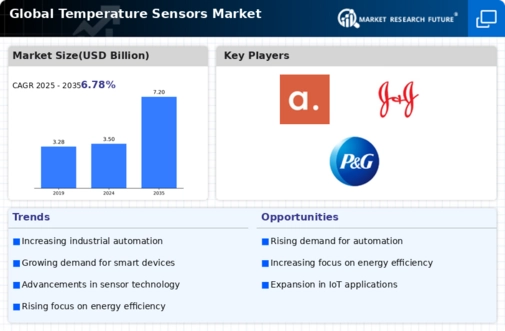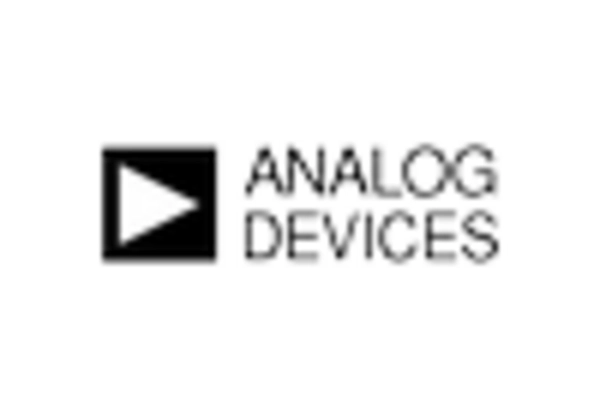Market Share
Temperature Sensors Market Share Analysis
In the ever-expanding Global Temperature Sensors Market, companies employ diverse strategies to secure market share and establish themselves as leaders in this essential industry. One fundamental strategy involves continual innovation in temperature sensing technologies. Companies invest in research and development to create advanced sensors with improved accuracy, response times, and compatibility with various applications. By offering cutting-edge solutions, these companies attract customers seeking state-of-the-art temperature sensing capabilities, positioning themselves as innovators in a market driven by technological advancements.
Cost leadership is another pivotal strategy within the Global Temperature Sensors Market. Companies aim to provide cost-effective solutions by optimizing manufacturing processes, sourcing materials efficiently, and enhancing overall operational efficiency. Offering temperature sensors at competitive prices without compromising on quality appeals to a broad spectrum of industries, particularly those where cost efficiency is paramount. Strategic partnerships with suppliers and distributors often play a role in maintaining a streamlined supply chain, contributing to the overall cost-effectiveness of temperature sensor products.
Market segmentation plays a crucial role in effective market share positioning within the Global Temperature Sensors Market. Companies identify specific industry sectors or applications with unique temperature sensing requirements, such as automotive, healthcare, or industrial manufacturing. Tailoring their products to address the distinct needs of these segments allows companies to capture a significant market share within specific niches. For example, a company may focus on providing temperature sensors designed specifically for medical devices, meeting the stringent precision and reliability standards in the healthcare industry.
Strategic collaborations and partnerships are instrumental in enhancing market share within the Global Temperature Sensors Market. Companies often form alliances with key players in related industries, such as electronics manufacturers, energy companies, or environmental monitoring agencies. These collaborations facilitate the integration of temperature sensors into diverse systems and applications, ensuring compatibility and interoperability. Additionally, partnerships with research institutions or academic organizations contribute to the development of innovative sensor technologies, reinforcing a company's position as a leader in the market.
Effective marketing and brand positioning are critical components of market share strategies within the Global Temperature Sensors Market. Companies invest in marketing efforts to showcase the benefits of their temperature sensor solutions, emphasizing factors such as accuracy, reliability, and adaptability to different environments. Building a strong brand identity establishes trust and credibility, influencing customers to choose specific temperature sensor products. Companies leverage digital marketing channels, participate in industry events, and engage with potential clients to reinforce their market presence and connect with a broader audience.
















Leave a Comment